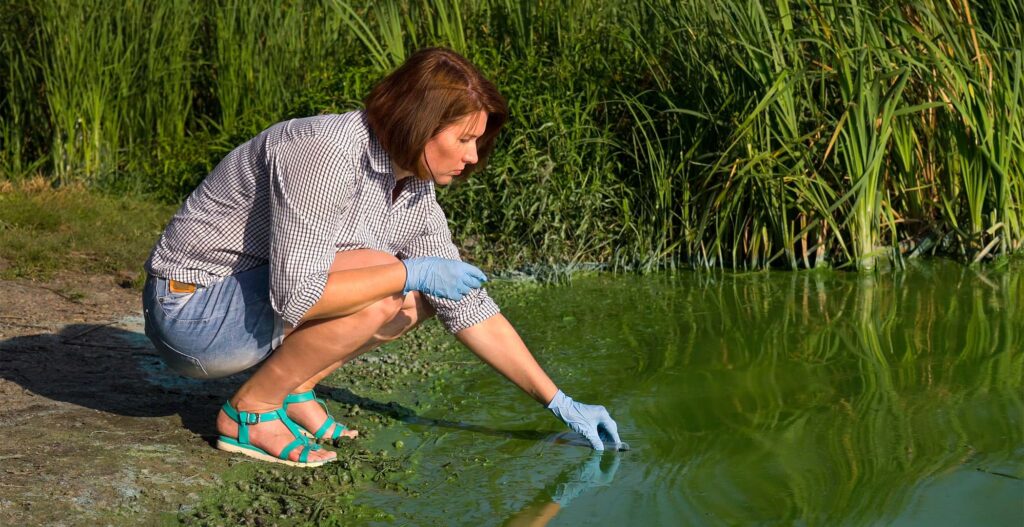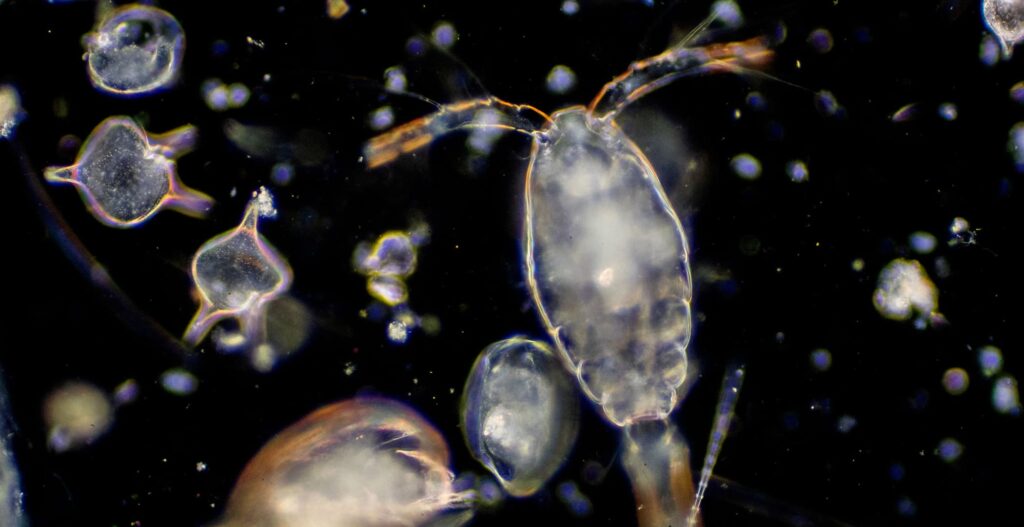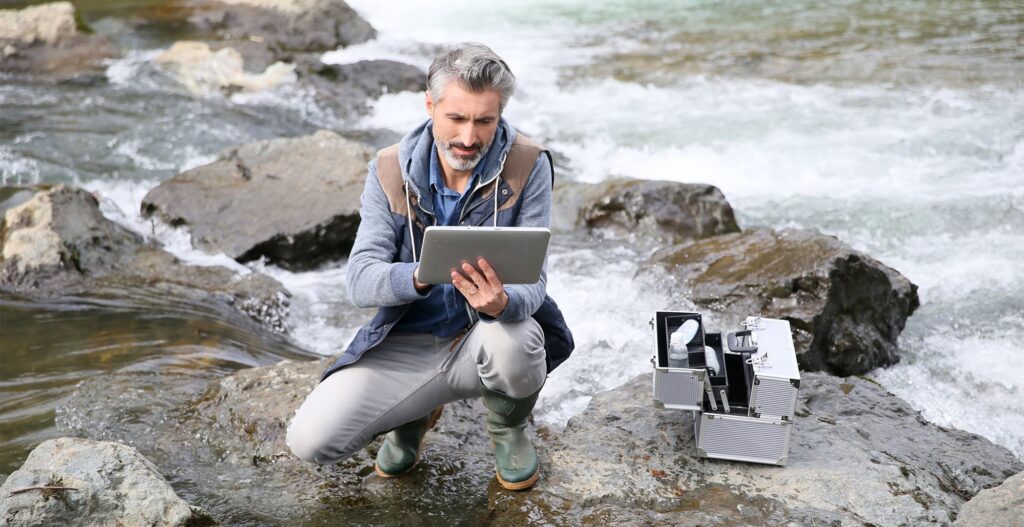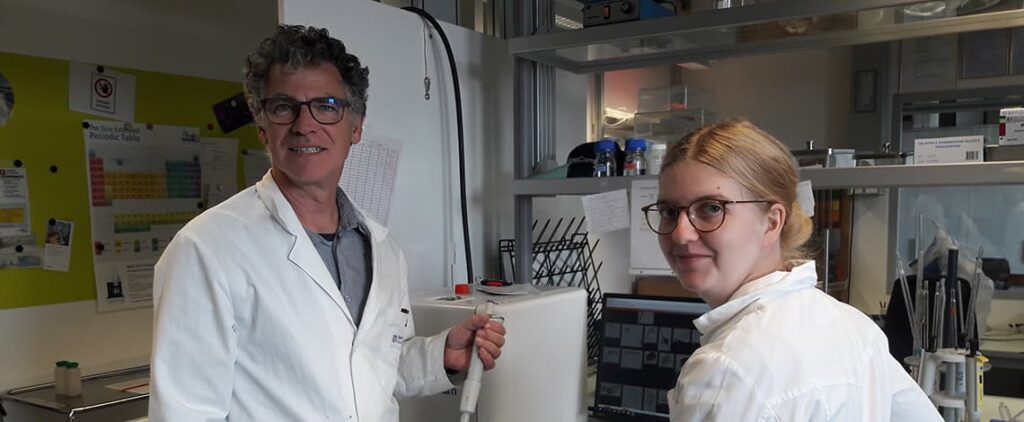Bathing lakes and Cyanobacteria monitoring
Remember the pre-pandemic times: The thermometer shows over 30 degrees and our body is craving for a cooldown. What could be more refreshing on hot summer days than to jump into a nearby lake? However, it happens that bathing lakes are closed due to various reasons. Especially during the hot and sunny summer period between June and September, European freshwater bodies like lakes, reservoirs, or rivers often suffer from harmful algae bloom (HAB). This explosive spread of algae is mostly caused by cyanobacteria. Depending on nutrient intake, aeration, and exposure to sunlight and the wind direction, high concentrations of cyanobacteria can appear on water surfaces close to the waterside.
[vc_hoverbox image=”1564″ primary_title=”What are Cyanobacteria?” hover_title=”Excursus: What are Cyanobacteria?” hover_background_color=”peacoc” css=”.vc_custom_1620381582255{background-color: #ffee00 !important;}”]Cyanobacteria are microscopic organisms. They are also called blue-green algae. In all types of water like fresh or marine water, cyanobacteria can be found. Even in brackish water, a combination of salt and fresh water, these single-celled organisms can exist. Sunlight enables them to produce their own food. Cyanobacteria love warm and high phosphorus and nitrogen environments. Having settled in such a calm, nutrient-rich environment, cyanobacteria multiply fast. Blooms appear which are visible on the surface of the water.[/vc_hoverbox]
[spacer space=50 space_mobile=10]
Are Cyanobacteria toxic to Humans?
If the concentration of these organisms reaches a certain level, they can strongly influence the water quality. Many cyanobacteria are able to produce toxins, which are often a health risk for humans and animals. These cyanotoxins can cause irritations of skin and mucus membranes, gastrointestinal and respiratory complaints. Humans can get in contact with cyanobacteria toxins by drinking or swimming in contaminated water. Furthermore, cyanobacteria are often one of the main reasons for taste and odor (T&O) problems during drinking water production from open reservoirs. Also, they tend to block filters. Often, the water is discolored by cyanobacteria and scum is visible on the water surface.
Monitoring Cyanobacteria prevents T&O problems
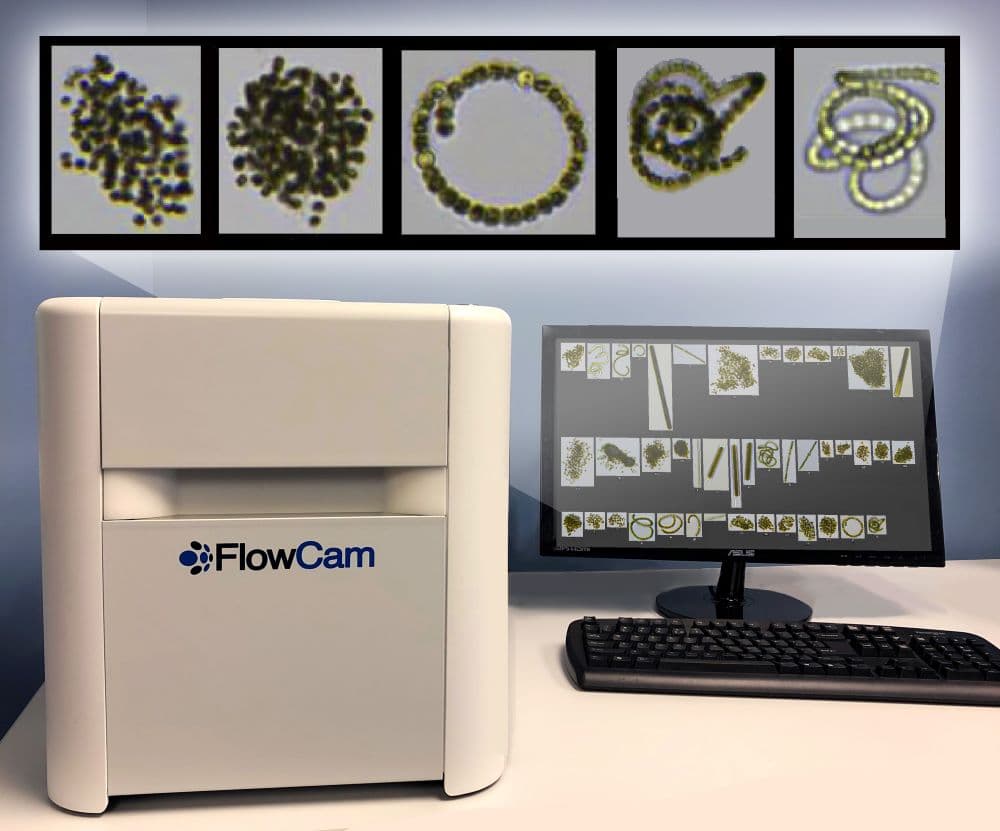
Over the last years, the monitoring and prevention of T&O problems has become a growing effort for many water utilities all over the world. The FlowCam Cyano by Yokogawa Fluid Imaging Technologies can be a helpful link in an effective chain of monitoring techniques. Applying the FlowCam Cyano helps to prevent T&O problems caused by harmful algae blooms. The key to being able to react fast is to clarify the following points first:
- Are cyanobacteria present in my water body?
- What types of cyanobacteria are present in which quantity?
- Are the present organisms able to produce T&O compounds and/or cyanotoxins?
- What is the concentration of T&O compounds and/or cyanotoxins?
Identify and quantify Cyanobacteria with FlowCam Cyano
For the identification and quantification of nuisance organisms in water bodies, the FlowCam Cyano is the perfect tool. The FlowCam Cyano is a semi-automated microscope with image recognition technology. Developed as a rapid response tool to address T&O and cyanotoxin events, the FlowCam Cyano is able to identify and quantify cyanobacteria, diatoms, and nuisance algae. Equipped with a 633 nm laser and two fluorescence detection channels at 700 nm ± 10nm and 650 nm ± 10 nm, it is possible to discriminate cyanobacteria from other chlorophyll-containing algae. This distinction is based on the fluorescent pigment signatures of phycocyanin and chlorophyll.
The right diagram in Figure 1 shows the intensity ratios of the fluorescents channels 1 (phycocyanin) and 2 (chlorophyll) for each measured particle. The line of red dots in the center displays the number of cyanobacteria in the sample.
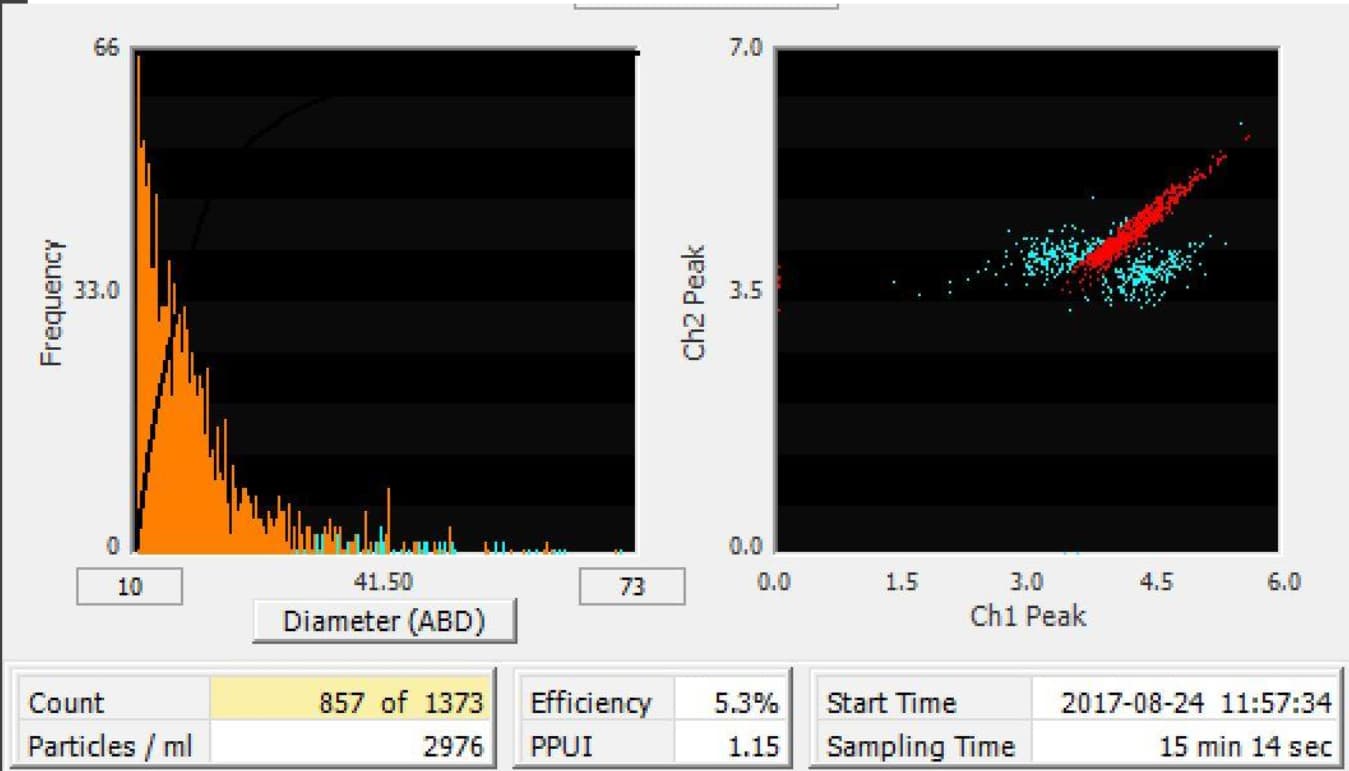
After analyzing a sample, the user will implement software-based image recognition routines in conjunction with measured fluorescence signatures. With these, it’s possible to categorize the taxa of the available organisms in the sample. The image recognition relies on statistical filters created from image libraries. The fluorescence signatures are visible in plotted data and discrete filter results.
In Figure 2, the detected organisms in the sample have been sorted by the intensity ratio of the two fluorescent channels. As you can see, it is displaying cyanobacteria in blue and other green algae in green.
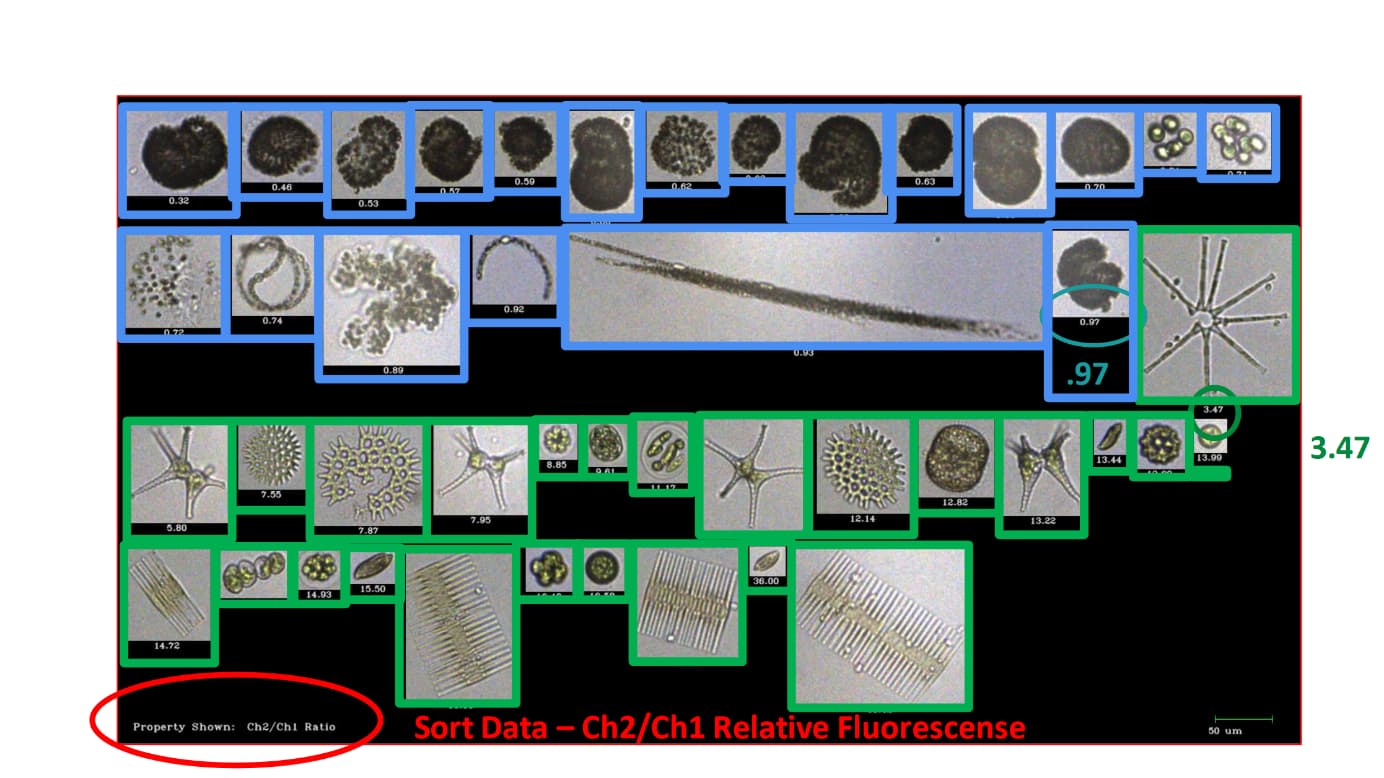
What happens after the detection of cyanobacteria?
After the presence of cyanobacteria has been successfully proven with the FlowCam Cyano, the next step would be to determine the type and quantity of T&O compounds. For example, Thermo-GC-MS/ECD measurement. Furthermore, it is necessary to determine the number of toxins by using qPCR and/or Thermo LC-MS/MS. If the amounts of T&O compounds and/or toxins will exceed defined benchmark levels, local treatment of the water body will be required. In most cases, actions like aeration or dosage of potassium permanganate or powdered activated carbon are necessary.
Why a monitoring system prevents damage at an early stage
I recommend running frequent samples several times a week. A well-established monitoring system will give water utilities the chance to act fast and at an early stage of a harmful algae bloom. With these simple steps, you prevent any harm to society as well as additional treatment costs.
